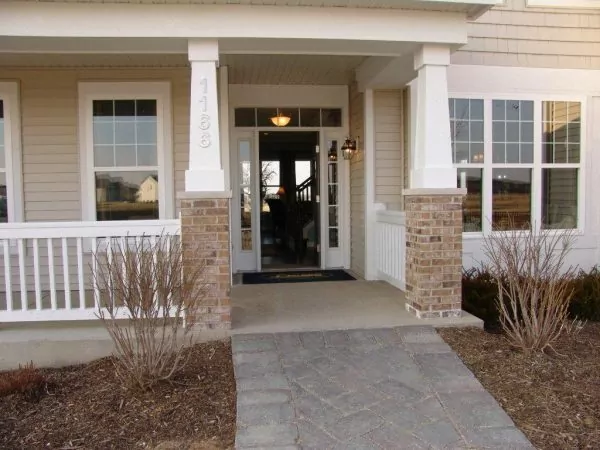What is your priority when looking for a new home? Good schools? Modern Kitchen? Backyard? How about abundant closet space? I want all those things too, but I need more. I want everyone to feel welcome and comfortable in my home. Though many people share this sentiment, I rarely hear people list accessibility as a priority.
Most people, particularly young couples, do not put accommodations high on their list. In fact, it’s often not even on their radar. Why would it be? I’ll give you a few reasons you may have overlooked.
Reasons to Buy a Home with Accessibility Features
- A sports injury may require you to use crutches or a wheelchair temporarily.
- Friends or family with a disability may visit.
- Your parents may need to live with you in later years.
- You may decide you want to grow old in this house.
- Life with small children is easier in a barrier-free home.
- Homes with accommodations are beautiful as well as functional these days.
- If doing a new build or remodel, incorporating accessibility does not mean more expensive.
- Great resale value – With the aging population in the U.S. steadily climbing, accessible homes are in high demand.
“Visibility”
Unfortunately, the word “accessibility’ seems to conjure up visions of old people and sterile environments for many. For that reason, I prefer to use the term “user-friendly” or “adaptability” instead.”Visitability” is another word we hear a lot lately as well.
A completely accessible environment based on ADA guidelines may not be practical or necessary for your situation. However, simple inclusive design features are extremely useful. For example, wider doorways and zero-step entries are helpful for both the new mom with a baby carriage and the wheelchair user. Door levers in place of knobs are functional whether you have weak upper body strength or an armload of laundry. Homes built with an open design concept with clear sight lines make life easier for everyone by eliminating a lot of the barriers often found in homes. Single-family homes are not required to meet the strict ADA standards and those who live in the house can therefore modify as much or as little as they wish to meet their lifestyle needs.
Universal Design
The concept of “visitability” is similar to the concept of universal design. This term refers to an approach to design that aims to create products, environments, and systems that are usable by people of all ages and abilities. Here are some key statistics and insights related to universal design:
Aging Population:
The world’s population is aging rapidly. According to the United Nations, the global population of people aged 60 and older is expected to more than double by 2050, reaching 2.1 billion.
Accessibility Needs:
As people age, their accessibility needs increase. In the United States, for example, the U.S. Census Bureau reports that around 40% of people aged 65 and older have at least one disability.
Disability Prevalence:
Disabilities can affect people of all ages. According to the World Health Organization (WHO), over 1 billion people, or about 15% of the world’s population, live with some form of disability.
Universal Design Benefits:
Universal design benefits not only people with disabilities and seniors but also individuals temporarily experiencing limitations (e.g., due to injury) and parents with young children. It makes products and spaces more inclusive for everyone.
Housing and Home Modifications:
Many older adults prefer to age in place, which often requires home modifications for accessibility. According to AARP, 87% of adults aged 65 and older want to stay in their current home and community as they age.
Economic Impact:
Investing in universal design can have economic benefits. The Harvard University Joint Center for Housing Studies estimates that by 2035, home modification expenditures will reach $87 billion annually in the United States.
Policy and Legislation:
Many countries have enacted laws and regulations that promote universal design and accessibility. These laws often cover public buildings, transportation, and housing.
Universal Design Principles:
Universal design principles include features such as wider doorways, lever-style door handles, ramps, curb cuts, accessible public transportation, and more, all aimed at making spaces and products more accessible.
Technology and Digital Accessibility:
Universal design also extends to digital products and services. Ensuring that websites and applications are accessible benefits not only people with disabilities but also enhances user experiences for all.
Innovation and Creativity:
Universal design encourages innovation and creativity in product and space design, leading to solutions that are more user-friendly and adaptable.
As our society becomes more inclusive and diverse, the principles of universal design become increasingly important. Creating environments and products that are accessible and usable by people of all ages and abilities not only enhances the quality of life but also reflects a more inclusive and equitable society.
The Bottom Line
Look for user-friendly features the next time you go house-hunting. We see more and more people incorporating adaptive design principles into homes and you may not need to settle for “good enough”. These principles make good sense and save money in the long run. Architects, builders, realtors, and policy planners are getting on board and are excited about the possibility of creating a world that encourages greater participation in life for all.










